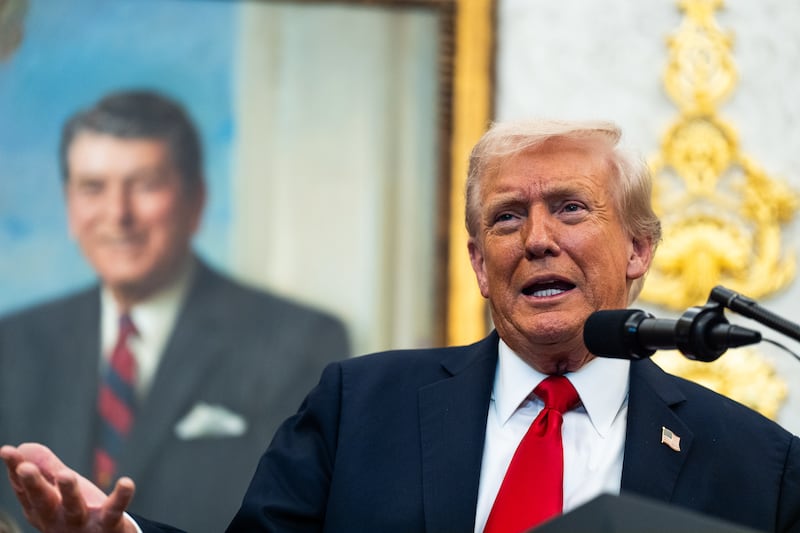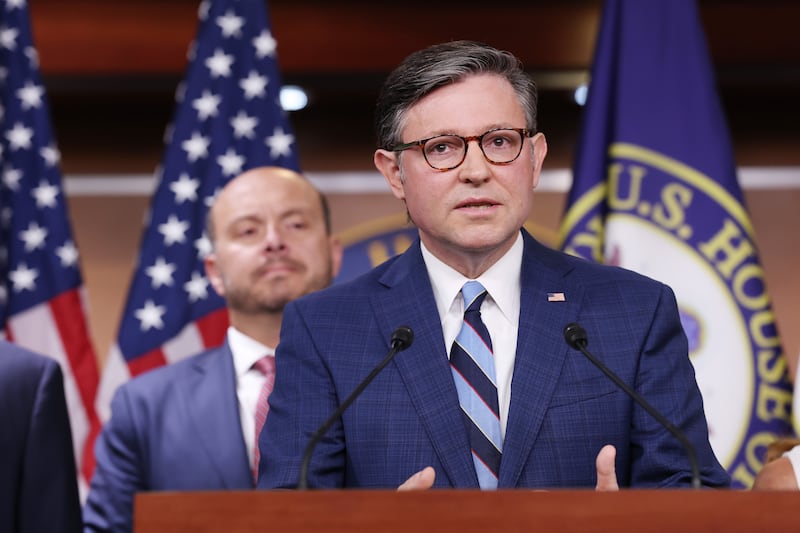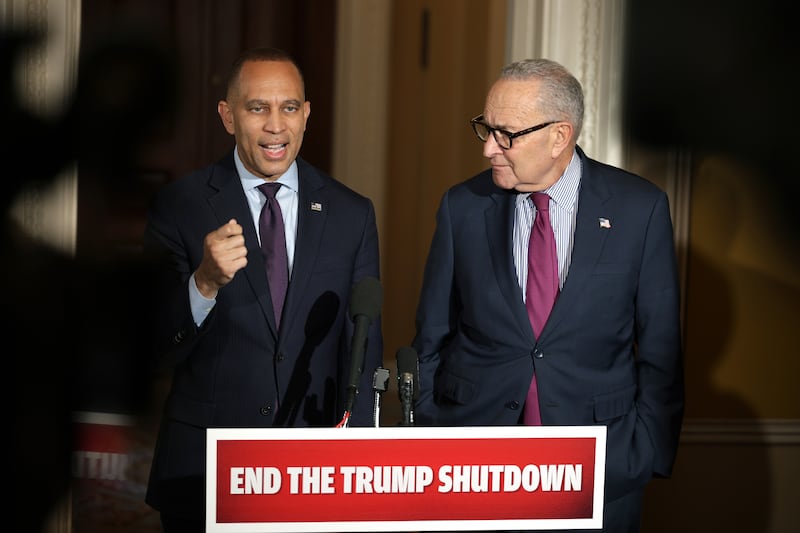The House hasn’t held a vote in a month. The Senate has held ten failed votes on the Republican temporary spending bill. President Donald Trump appears unperturbed and uninterested in facilitating the art of a deal in the deeply divided Congress. And there’s no end in sight.
The president’s approach to his second term has been to go it alone, and if not for the courts, he would have been full speed ahead. Republican leadership in Congress has signaled, not in words but in actions, that they’re largely willing to abdicate their role as a coequal branch of government.
The partial government shutdown has been underway for 17 days since Senate Democrats rejected the short-term GOP spending deal. Republicans were unwilling to negotiate with Democrats to address expiring health care subsidies, and neither side has budged.

Since the start of his second term, Trump has demonstrated an inclination to govern by force. While only a president can typically break such a deep congressional deadlock, the White House has attempted instead to apply pain.
The whole process has been but a taste of the fights to come as the president continues to act as if Congress does not hold the power of the purse.
Trump has declared he will slash “Democrat programs,” has moved forward with pocket rescissions, and withheld blue state funds.
On Thursday, the president was asked if he would use his negotiating skills to end the shutdown anytime soon. Trump said Republicans did not want anything and repeated attacks on Democrats. He dedicated more time this week to discussing a ballroom with donors than solving the shutdown or reaching across the aisle.
This is not the first government shutdown nor the longest (that was in late 2018 during Trump’s first term), but it is quickly nearing that milestone, and lawmakers on both sides of the aisle have acknowledged in the halls of the U.S. Capitol that this time feels different.
Speaker Mike Johnson sent the House home and won’t bring them back until the lights are turned back on. To be clear, the lights are not literally out, but there’s almost no one there. The halls on the House side of the Capitol are eerily quiet.

It’s like the 1993 Bill Murray movie Groundhog Day, where every day is a repeat of the day before: congressional leaders holding press conferences, lawmakers on both sides shooting painful to watch social media videos and the same vote fails in the Senate.
Early on, senators huddled in bipartisan groups to discuss a path forward, but those talks quickly turned less optimistic. There appears to be no sense of urgency to reopen the government, all while the clock also ticks down on the healthcare cliff.
The broader public has so far been largely shielded from the shutdown fallout, but federal workers have taken the brunt of the dysfunction. The administration threatened mass layoffs and furloughed workers not receiving back pay. The legal battle is already underway.
Some Republican and Democratic lawmakers alike have expressed concerns that the administration’s efforts further undermine the appropriations process as lawmakers look to write the budget each year.
A few moderate Republicans have questioned how refusing to deliver the designated funds will convince Democrats that they are negotiating annual government spending in good faith. They’ve also warned the White House not to go too far and alienate Democrats who are necessary to reach the 60 Senate vote threshold even further in the future.
But thus far, for the past nine months, GOP congressional leadership has let Trump’s efforts to erode Congress’s work slide. In the increasingly nasty shutdown standoff, they’ve accused Democrats of holding the government hostage over health care and argue Senate Minority Leader Chuck Schumer is only digging in because he fears a political challenge from the far-left.
Even if that were the case with the New York senator, there are still 43 other Senate Democrats from across the political spectrum who also have not caved.

It is true that Democrats have changed their tune from numerous past funding debates over short-term spending deals. However, the leadership from both sides haven’t so much as had a sit-down since before the government shut down just after midnight on October 1. The White House and Johnson have insisted there is absolutely nothing to negotiate.
Johnson has become increasingly flustered on the Hill, declaring this week he didn’t like to be “mad Mike” as he stumbled over his words, but he hasn’t relented to calls to bring the House back, even as some members of his own caucus have questioned the strategy.
On Thursday, Democrats signaled just how ready they were to dig in when they blocked the full-year defense spending bill as Senate Republicans attempted to move individual full-year spending bills forward.
The bill passed out of committee this summer with bipartisan support but the political calculus since then has dramatically shifted.
As for a president so keen to tout his peacemaking skills overseas, he has not lifted a finger to facilitate an end to the standoff, and in many instances, eagerly stoked the political battle raging just down the road on Capitol Hill as his top officials look at ways to consolidate his power in Washington, DC, further.
The post How Trump Broke Congress in Just Nine Months appeared first on The Daily Beast.




